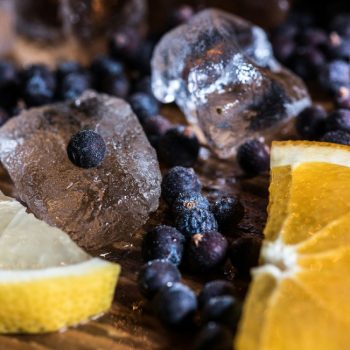Could ‘gin fingerprints’ improve flavour and detect fakes?
Scientists have developed a technique they believe could help producers futureproof gin, conduct quality control and detect fraudulent products.

Dr Ruaraidh McIntosh, Dr Dave Ellis and PhD student Kacper Krakoqiak from Heriot-Watt University in Scotland have been working with professor Dušan Uhrin from the University of Edinburgh on the project.
The new process takes a chemical ‘fingerprint’ of a spirit in seconds.
McIntosh said: “Gin production has exploded in Scotland and the UK over the past 20 years but, compared with Scotch whisky, it’s very loosely defined and regulated, and not well-researched.
“Producers need to know more so that they can ensure they have years of sustainable, flavoursome gin ahead of them.
“And consumers and importers need to know that gin is genuine and the quality they’re expecting.”
Heriot-Watt chemists used nuclear magnetic resonance (NMR) spectroscopy to examine the juniper-forward spirit. The technique is often used in the structural determination of molecules.
Sixteen different expressions were put to the test – some were bought from supermarkets, while other samples were provided by Heriot-Watt’s International Centre for Brewing and Distilling.
Ellis explained: “At the moment, most gin analysis is carried out using mass spectrometry. It’s effective and highly sensitive but does not provide a complete picture of the composition in a single experiment in the way that NMR can.
“NMR basically fingerprints the gin’s chemical compounds. It does this by detecting the signals given by the hydrogen atoms in each compound. These act as markers and enable identification.
“In under five minutes, we end up with an overlay of all these fingerprints, providing a snapshot of the compounds present.”
Extra protection for gin
The scientists believe this technique could offer extra protection for the gin category – a sector, they noted, that is less heavily regulated than, for example, Scotch whisky.
Furthermore, Ellis noted how colleagues at Heriot-Watt’s International Centre for Brewing and Distilling have created a database of botanicals, which could be used as a basis of standardisation in the future – “but we shouldn’t discourage innovation in gin production”, Ellis added.
The team is expanding its research to cover other alcoholic beverages.
Ellis added: “We determined which compounds were present in each gin, and in which quantities.
“NMR can distinguish between different structural forms of individual molecules, and there are many of these cases in gin.
“For example, the flavour compounds pinene and limonene have the same atomic makeup but have different structures and, critically, flavours.
“We tested some fruit gins and gin liqueurs. The NMR identified the different varieties of sugar present in the gin, which are introduced through flavour additives, and their quantity. This is important information for consumers.
“UK distillers rely on imported juniper berries for their gin, and climate change could affect their quality and availability. If their traditional supply dries up, will sourcing juniper berries from elsewhere change the flavour? That’s what we could determine with this technique.
“NMR has huge potential for the gin industry.”
Related news
Spirit Master: Astraea Spirits
